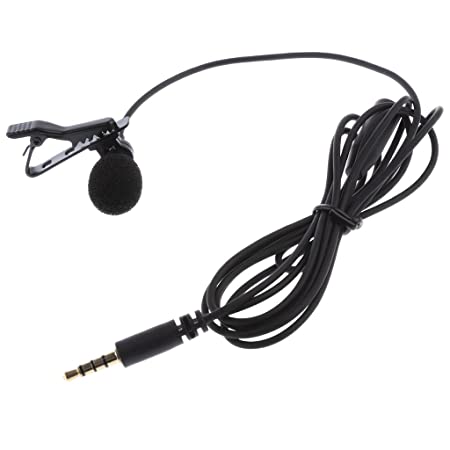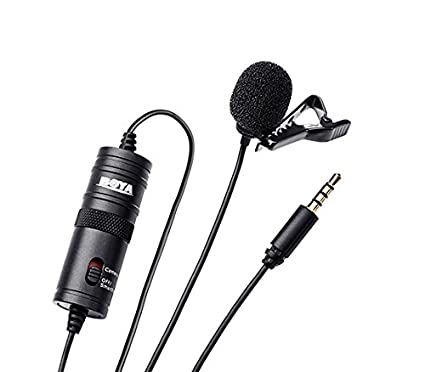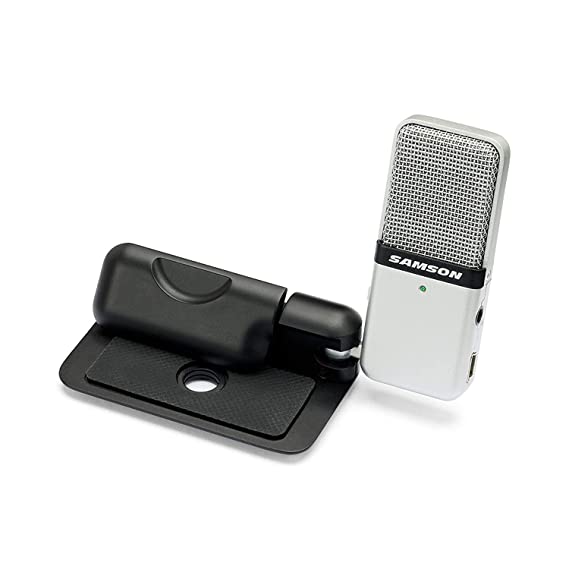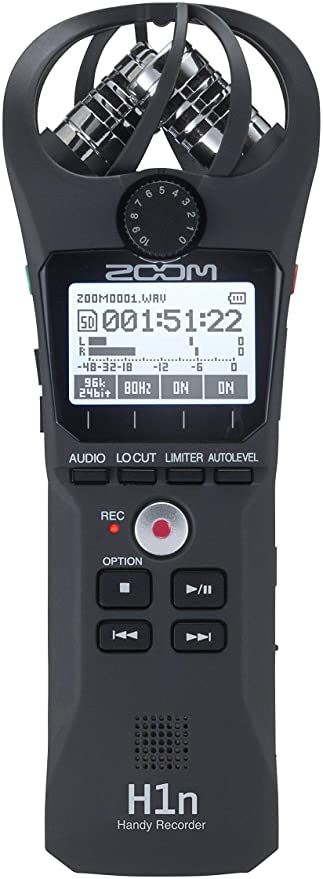This post will help all the beginners in voice over & dubbing select best mics available as per their requirements and budget.
Table of Contents
Big shoppe store generic mic

The very first one is a generic 3.5 mm mic, this is the most basic mic which is available in the market, generally i have seen this mic selling online, due to the credibility. One can find something matching to this mic even in the offline market, but then the warranty etc can be manipulated by the shopkeepers sometimes, hence most of them buy this mic online.
Now, this is a very basic mic as mentioned, i would suggest if your mobile phone is decent enough and if it can control even a little bit of background noise, then you don’t need to buy this mic. But, if the mobile phone recording has lot of background noise the for basic recording, this mic will do your job and will sound much clearer as compared to mobile phone. It will also control the “PHH” & the “Dhh” sound, because it has a small pop filter (small sponge kind of on the tip of the mic) on it as you can see it in the picture as well.
Boya BY M1

Boya is a brand that has been making a name for itself in the world of microphones. Its range of microphones includes both wired and wireless options for a variety of applications, including vlogging, live streaming, and voice overs.
This mic was highly used by You Tuber’s and especially by the beginners, primarily being reasonably priced and easy to use. It can be used both for DSLR and mobile phones. The 6 meter long wire generally was an added advantage for people to shoot their videos from a distance. But, if you are someone who does not require this long wire, then it could be of some concern, as it is sometimes difficult to manage the wire when it gets tangled.
One of Boya’s most popular products is the BY-M1, a budget-friendly lavaliere microphone that provides high-quality audio. The BY-M1 is a great option for those just starting out in the world of voice overs, as it is easy to use and does not require any additional equipment or software.
Overall, Boya microphones offer great value for their price, making them an excellent choice for beginners and those on a budget.
Samson Go Mic

The Samson Go Mic is a portable USB condenser microphone that provides high-quality audio for voice overs, podcasts, and music recordings. With a frequency response of 20Hz to 18kHz, it captures detailed audio with clarity and precision. The Go Mic also comes with 3 setting, which is a cardioid, -10DB & Omni setting. I will try to explain each setting below pickup pattern that isolates the sound source and reduces background noise.
CARDIOID SETTING
The cardioid setting in the Samson Go Mic refers to the directional pickup pattern of the microphone. Cardioid is a polar pattern that picks up sound primarily from the front of the microphone and rejects sound from the sides and rear. This makes it an ideal choice for voiceovers, podcasts, and other applications where the sound source is in front of the microphone and background noise needs to be minimized.
The cardioid pattern is named after its heart-shaped pickup pattern, which looks like a cardiogram when graphed. It is one of the most common microphone pickup patterns and is found in many microphones, including the Samson Go Mic. When using the cardioid setting, it is important to position the microphone so that the front of the microphone faces the sound source and the rear faces away from any unwanted noise.
– 10 DB SETTING
The -10dB setting in the Samson Go Mic is a feature that makes the microphone less sensitive to loud sounds. This is useful when you are recording something very loud, like a live concert, or when there is a lot of background noise. The -10dB setting helps prevent the audio from becoming distorted or too loud, which can cause problems. To use the -10dB setting, you just need to switch the microphone to this mode and position it close to the sound source, meaning when you are recording you should be close to the mic, so that it captures the sound well.
However, it’s important to remember that the -10dB setting should only be used when needed because it can lower the overall volume of the audio signal. In this case, if it is necessary to record the voice in -10dB, then one can enhance the volume of the recording in the any software. This is just a tip
OMNI DIRECTIONAL SETTING
The Omni-directional setting in the Samson Go Mic is a microphone mode that captures sound from all directions around the microphone. This means that no matter where the sound is coming from, the microphone will pick it up. This setting is useful when you want to record a group conversation, or when you want to capture the ambient sounds of a room or environment.
Unlike the cardioid setting which only captures sound from the front of the microphone, the Omni-directional setting captures sound from all directions equally. This can be helpful in situations where you don’t know exactly where the sound will be coming from, or when you want to capture a more natural and immersive sound.
Zoom H1N

The H1N Zoom Handy Recorder is a portable digital audio recorder that is ideal for recording voiceovers and other types of audio content. Some of the features of the H1N Zoom Handy Recorder include:
- Compact size: The H1N is small and lightweight, making it easy to carry with you wherever you go.
- High-quality microphones: The H1N features built-in microphones that capture clear and detailed sound, even in noisy environments.
- Multiple recording modes: The H1N offers several recording modes, including stereo and mono recording, as well as different sample rates and bit depths.
- Easy-to-use controls: The H1N features simple controls that make it easy to start and stop recordings, adjust the volume, and navigate the menu.
The H1N Zoom Handy Recorder is beneficial for voice recording because it allows you to capture high-quality audio in a portable and convenient package. Whether you are recording voice overs for a video project, conducting an interview, or recording a podcast, the H1N offers the versatility and performance you need to get the job done right. With its compact size, easy-to-use controls, and high-quality microphones, the H1N Zoom Handy Recorder is an excellent choice for anyone looking to record professional-quality audio on the go.
Blue Yeti

The Blue Yeti microphone is a popular choice among voice over artists, dubbing artists, and singers, and for good reason. Some of the features of the Blue Yeti microphone include:
Four polar patterns: The Blue Yeti features four different polar patterns (cardioid, bidirectional, omni directional, and stereo) that allow you to adjust the microphone’s sensitivity to suit different recording situations.
High-quality sound: The Blue Yeti has a built-in analog-to-digital converter that captures clear and detailed sound with a frequency response of 20Hz-20kHz.
Easy to use: The Blue Yeti is a plug-and-play microphone that requires no drivers or additional software to use. Simply plug it into your computer or recording device and start recording.
Color options: The Blue Yeti comes in a variety of colors, including black, silver, white, platinum, and red, so you can choose the one that best fits your style.
Compatibility: The Blue Yeti is compatible with both Mac and PC computers, as well as with many recording software programs.
The Blue Yeti microphone comes with several different settings that allow you to customize your recording experience. These settings include:
- Cardioid mode: This setting is best for recording single sounds directly in front of the microphone, making it ideal for voice overs and podcasting.
- Bidirectional mode: This setting is best for recording sounds from two directions, making it ideal for interviews or recording duets.
- Omni directional mode: This setting captures sound from all directions, making it ideal for recording groups or ambient sounds.
- Stereo mode: This setting captures sound from two different directions, making it ideal for recording music or live performances. (Ideally best for gamers)
In addition to these settings, the Blue Yeti also comes with a mute button that allows you to quickly and easily mute your microphone when you need to. This is useful if you need to take a break or if you want to prevent background noise from being picked up during a recording.
To use the mute button, simply press the button on the back of the microphone. When the light on the front of the microphone turns red, you’ll know that the microphone is muted. To unmute the microphone, simply press the button again, and the light will turn off, indicating that the microphone is ready to use.
The Blue Yeti microphone is beneficial for voice recording because it allows you to capture high-quality sound with ease. Whether you are a voice over artist, dubbing artist, or singer, the Blue Yeti offers the versatility and performance you need to create professional-quality recordings. With its multiple polar patterns, high-quality sound, easy-to-use design, and compatibility with a variety of recording devices and software programs, the Blue Yeti microphone is a great choice for anyone looking to take their recordings to the next level.
Hope by now you must have got a fair idea on different types of microphones and their settings.
If you would like to watch the details in video form along with on how to make a ZERO cost Home setup with ZERO cost audio editing software then click here
To read blog on our Voice Over & Dubbing course click here. To watch video on our Voice over & Dubbing course click here
In case you have any questions, please drop us a message and we will try and answer as many questions possible.